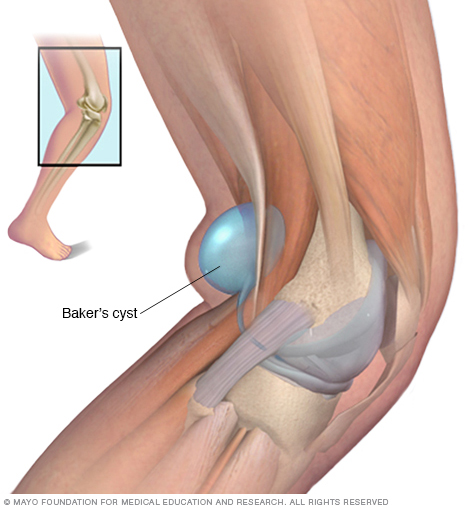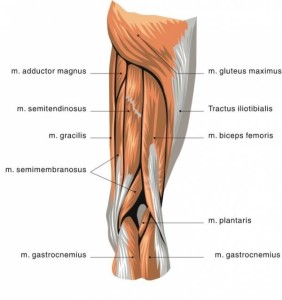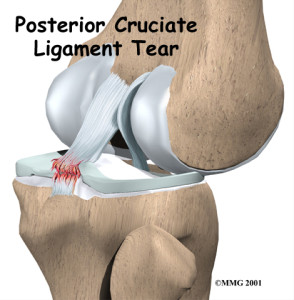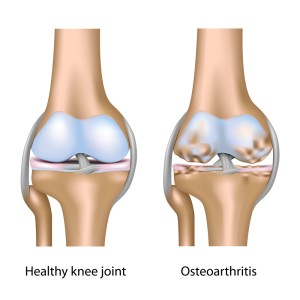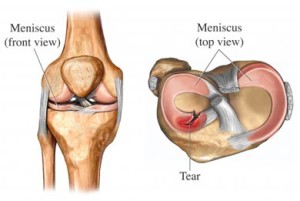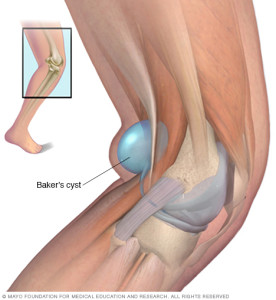Causes Of Pain In The Back Of The Knee
There are a variety of problems that can cause pain at the back of the knee. Injuries can cause damage to hamstrings, ligaments and tendons located in this area. This can cause pain that intensifies with movement. Diseases such as arthritis can cause tenderness, swelling, pain and redness. Most often pain located in this area is the result of an injury. Problems in this area sometimes develop over a period of time and become a pain at the back of the knee that will not go away. The movement of the knee often becomes restricted, sharp pains can develop and swelling may appear. Often the problem can be understood by figuring out how it began, the symptoms being experienced and the type of pain involved.
5 Causes of Back Of Knee Pain
Biceps Femoris Tendonitis
Biceps Femoris Tendonitis is the most common injury. Thus happens when one of the hamstring tendons becomes inflamed. This can happen during activities such as running, sprinting or kick boxing. This pain begins quickly as a dull ache at the back of the knee where this particular tendon attaches itself to the bone. The pain then becomes much sharper in intensity with any movement. Mild swelling is also common with this injury.
Posterior Cruciate Ligament (PCL) Tear
The second cause of pain also comes from an injury. The Posterior Cruciate Ligament provides stability to the area behind the knee. As one of the strongest muscles in this area any injury such as a tear or a sprain will cause severe pain. This can happen if the knee receives a hard blow or if there is an overextension of the knee. Car accidents are the most common cause for this injury. The joint can become unstable and both swelling and pain behind the knee are common with this condition.
Arthritis
The third cause of knee pain is arthritis. Osteoarthritis is caused by wear and tear being placed on the knee over a period of years. The cartilage that cushions the bones and joints begins to degenerate. Rheumatoid arthritis is an autoimmune disease and causes swelling to the area. This condition cause the immune system to attack the lining of the joints. The joints that are affected can be destroyed or distorted. Other symptoms include stiffness, grinding and the inability to move the knee in the proper way without severe pain. This condition usually affects individuals over fifty years of age and can be irritated by extremely cold weather.
Meniscus Tear
A tear in the Meniscus is the fourth type of injury to the back of the knee. When the knee receives a sudden twisting motion either of the two menisci can tear. Overusing the knee for a long period of time can also cause this tear. The menisci is two pieces of cartilage located in the knee. The pieces are shaped like crescents and are referred to as the Meniscus. A tear in this cartilage can cause the knee to lock in place and have no ability to move. Swelling is also quite common as well as pain.
Baker’s cyst
A fifth cause of pain is from a Popliteal cyst also known as a Baker’s cyst. This appears as a swelling behind the knee and can be caused by an inflammatory disease or an injury. Fluid will build up in the knee causing a bulge to appear behind the knee. The bulge is in the shape of a ball. This condition only causes pain in some of the people who have this cyst. Any range in the motion of the knee will also be affected.
Treatment Options For Back of Knee Pain
The treatment of knee pain depends on what the problem is. A cyst is generally treated with exercises, cold therapy, injections and on rare occasions surgery. The pain may require several months to diminish. A tear in the cartilage can require a knee brace, exercise and sometimes surgery. The slow blood supply of the meniscus will slow down the recovery time needed. Arthritis can be treated with heat or ice, acupuncture, gelled pads for the knees, medication and injections. Any bone damage is permanent but treatments can cause a reduction in pain, stop future deterioration and increase movability in the knee. A hamstring injury has a fairly long recovery period of six to twelve weeks. Exercises and massage can both help.
Conclusion
When people start to experience pain at the back of their knee they often disregard it in the hopes it will go away by itself. This usually does not work and simply gives the condition a chance to get worse. It is a good idea to see a doctor if the pain does not go away within a few days.
If it turns out to be something minor at least peace of mind will have been established. Often there are treatments available to help ease the pain. If the condition was caused by a car accident or an injury while running or playing sports not having the knee checked out can cause the problem to worsen quickly. Although some problems can’t be fixed help in preventing the damage from continuing is available.
